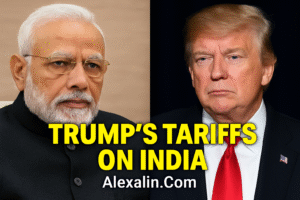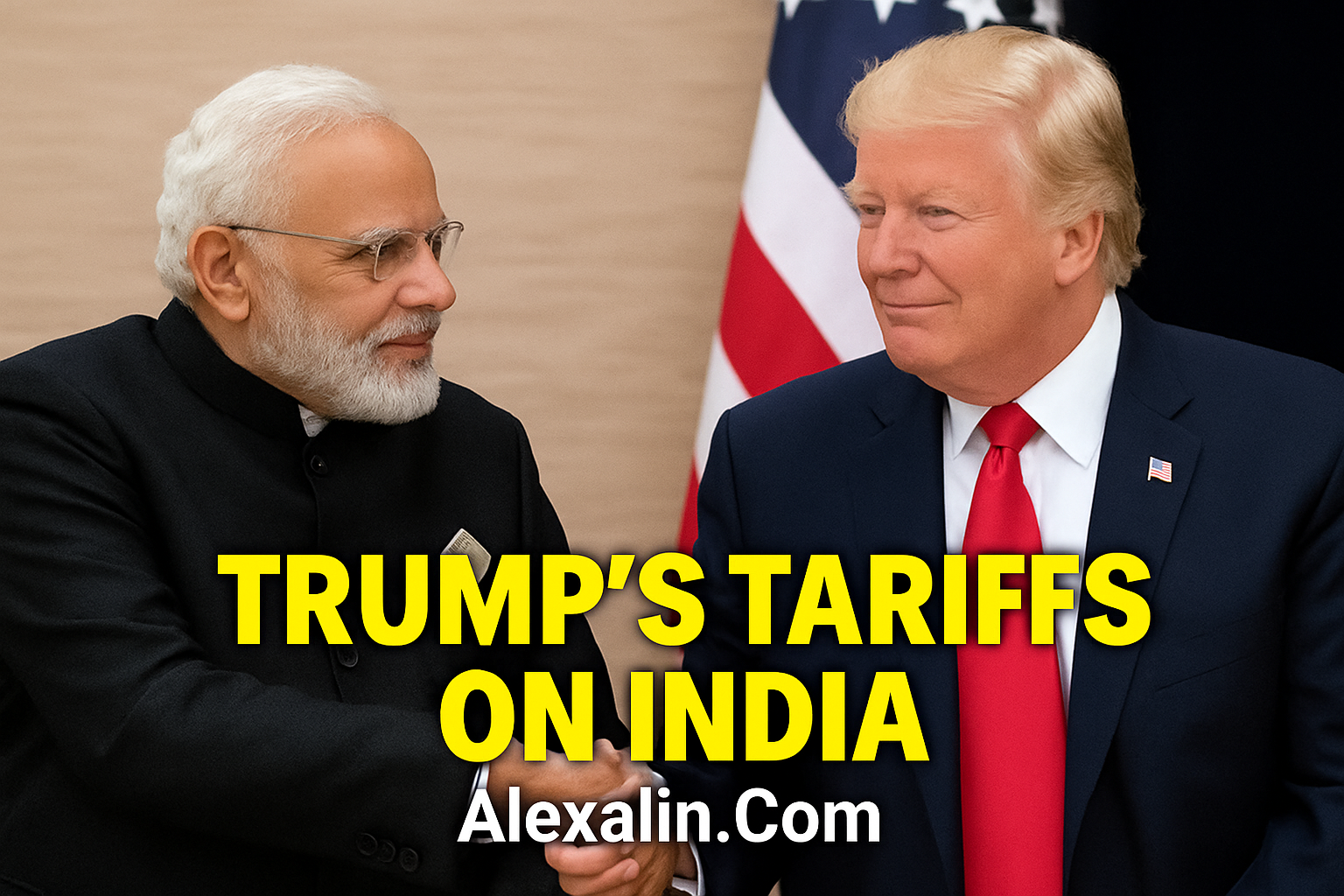Trump’s Tariffs on India
In 2019, former U.S. President Donald Trump triggered a significant shift in global trade dynamics by imposing a series of tariffs on goods from India. This bold move, part of Trump’s broader “America First” trade strategy, not only strained U.S.-India relations but also impacted various industries and global markets.

A Turning Point in Bilateral Trade Relations
The Trump administration argued that India was not providing the U.S. with “equitable and reasonable access” to its markets. As a result, the U.S. decided to terminate India’s designation under the Generalized System of Preferences (GSP), a program that allowed duty-free entry for over 2,000 Indian products. This step meant that Indian exporters would face new tariff barriers when selling goods like textiles, auto parts, and agricultural products in the American market.
India responded with retaliatory tariffs on American goods, including almonds, walnuts, apples, and industrial products. While the tariff battle between the U.S. and China received more global attention, the U.S.-India trade conflict quietly escalated behind the scenes.
Economists and trade analysts viewed these developments as a setback to what was once seen as a growing and stable economic partnership. India was among the largest beneficiaries of the GSP, and its removal created uncertainty among Indian exporters who relied heavily on the U.S. market.
Politically, the tariffs sparked a mixture of national pride and strategic caution in India. Prime Minister Narendra Modi’s government walked a tightrope between asserting India’s interests and maintaining a diplomatic balance with the Trump administration. Despite the tensions, both countries continued high-level negotiations to resolve trade disputes.
Read More: Global trade impact of US-India tariff tensions.
Trump Advice Backfired in India: What Went Wrong and Why It Matters.
Interestingly, Trump’s tariffs did not completely derail U.S.-India ties. Strategic cooperation in defense, energy, and technology continued to grow. However, the tariff issue highlighted vulnerabilities in trade policy and the need for long-term economic frameworks beyond short-term political decisions. Trump’s economic strategy with India.
With the Biden administration now in place, many expect a more multilateral approach. The US-India trade dispute is explained: India continues to seek restoration of the GSP benefits and hopes for fairer trade discussions. The lessons from Trump’s tariff policy remain critical for shaping the future of U.S.-India economic relations.
FAQs
Q1. Why did Trump impose tariffs on India?
A: Trump believed that India was not offering equal access to its markets and was unfairly benefiting from U.S. trade programs like the GSP.
Q2. Which Indian products were affected by Trump’s tariffs?
A: Products such as textiles, leather goods, auto components, and certain agricultural items were affected due to the removal of GSP benefits.
Q3. How did India respond to Trump’s tariffs?
A: India imposed retaliatory tariffs on key American exports, including almonds, apples, and medical equipment.
Q4. Did the tariffs harm U.S.-India relations permanently?
A: While it caused tension, the broader diplomatic relationship remained intact, especially in defense and technology cooperation.
Q5. What’s the current status of these tariffs under Biden’s administration?
A: India is in talks with the Biden administration to restore GSP benefits and create a more balanced trade relationship.
